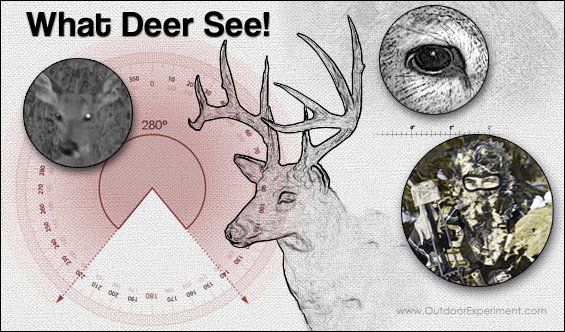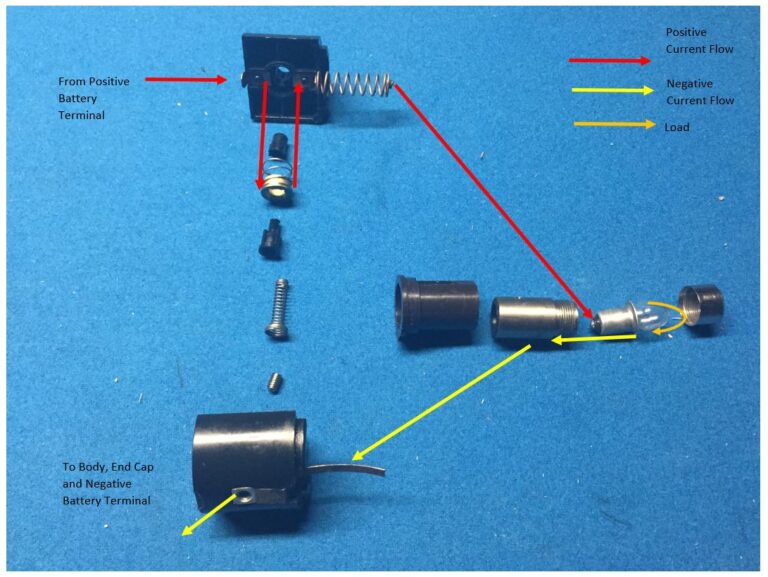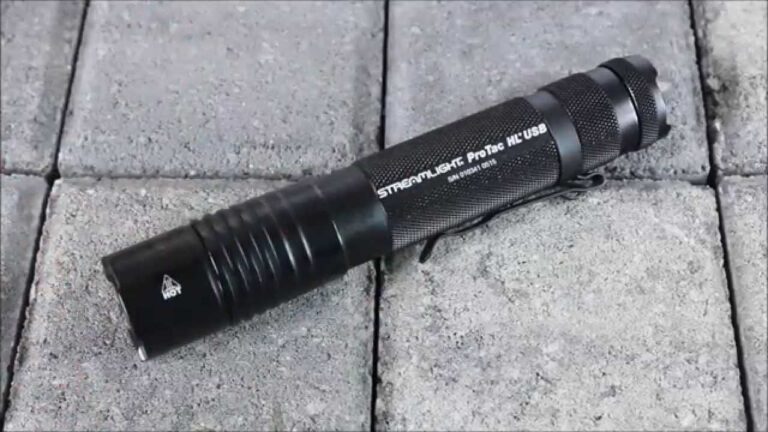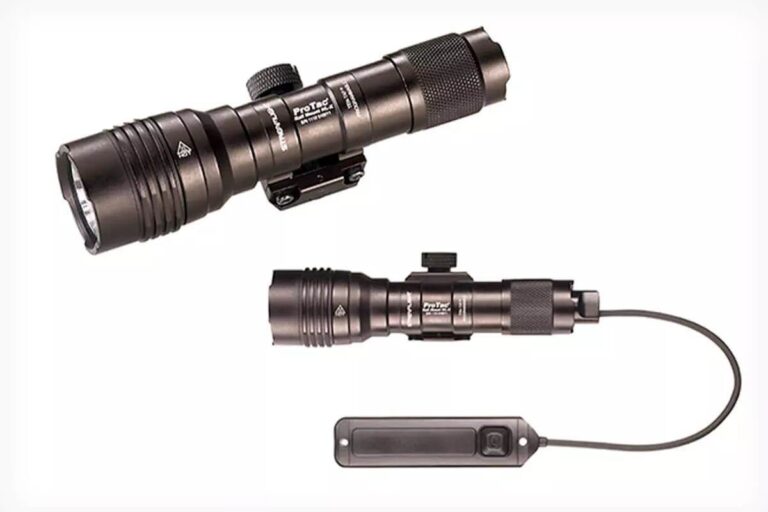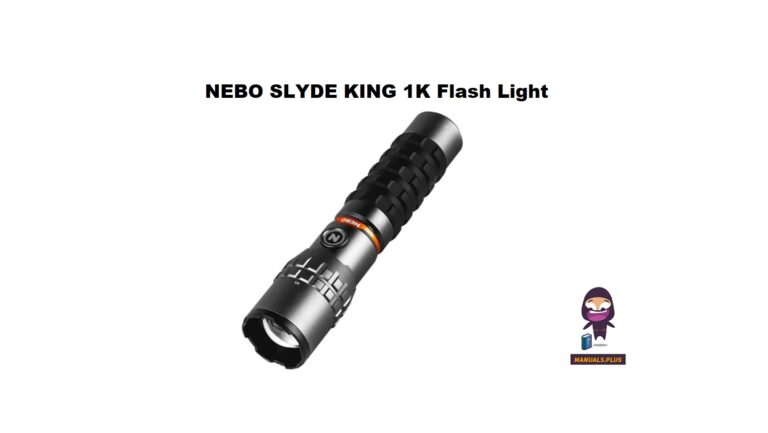Can Deer See Red Flashlights? Understanding Their Vision
The question of whether deer can see red flashlights is of great interest to hunters and wildlife enthusiasts alike. Understanding how deer perceive different colors can significantly impact hunting strategies and animal observation.
This article will explore the science behind deer vision, focusing on their sensitivity to various light wavelengths, including red, green, and white. Additionally, we will discuss the practical implications for hunters when choosing flashlight colors and how these choices can either spook or go unnoticed by deer in their natural habitat.
By examining research findings and anecdotal evidence, readers will gain a comprehensive understanding of deer vision and the effectiveness of red flashlights in hunting scenarios.
Table of Contents
- Understanding Deer Vision
- The Science Behind Color Perception
- Can Deer See Red Light?
- Alternatives to Red Light
- Practical Implications for Hunters
- Real-Life Experiences from Hunters
- FAQ
- Conclusion
Understanding Deer Vision
Structure of Deer Eyes
Deer possess a unique eye structure that enhances their ability to see in low light conditions. Their eyes are equipped with a high concentration of rod cells, which are responsible for low-light vision.
Additionally, deer have an oval pupil shape that acts similarly to a camera’s aperture, allowing more light to enter. This structural adaptation enables deer to have superior night vision compared to humans, making them adept at navigating their environment after dark.
Dichromatic Vision Explained
Deer are dichromatic, which means they possess two types of color receptors (cones) in their eyes. This allows them to perceive short wavelengths (blue) and medium wavelengths (green) very well.
However, they are significantly less sensitive to long wavelengths, such as red and orange. Therefore, while they can differentiate between various shades of blue and green, they struggle to detect red hues, making them effectively red-green color blind.
As a result, certain colors that are conspicuous to humans may be muted for deer.
Comparison with Human Vision
In comparison to humans, who have trichromatic vision (three types of cones), deer have a limited ability to see the full spectrum of colors. Humans can perceive a wide range of colors, including red, green, and blue, which allows us to differentiate between these colors easily.
This difference in vision is crucial for hunters to understand, as it influences which colors are less detectable to deer.
| Color Wavelength | Perception by Deer | Perception by Humans |
|---|---|---|
| Short (Blue) | High Sensitivity | High Sensitivity |
| Medium (Green) | High Sensitivity | High Sensitivity |
| Long (Red) | Low Sensitivity | High Sensitivity |
The table above illustrates the differences in color perception between deer and humans. As shown, deer are highly sensitive to blue and green wavelengths, which aids their foraging and social behaviors in low-light environments.
Meanwhile, their low sensitivity to red light suggests that colors in this spectrum, commonly used by hunters, may not be as alarming to deer as previously thought. This insight is pivotal for developing effective hunting strategies that minimize deer detection.
The Science Behind Color Perception
Research Methods Used
Studies investigating deer vision have utilized various research methods, including electroretinography, which measures electrical responses of the retina to light stimuli. Additionally, behavioral tests with live deer have been conducted to assess their reactions to different color wavelengths.
These methods provide valuable data on how deer perceive color and light, contributing to our understanding of their visual capabilities.
Key Findings from Studies
Key findings from research indicate that deer are particularly sensitive to blue and green light, allowing them to navigate effectively in their natural habitats. In contrast, they exhibit a notable lack of sensitivity to red wavelengths.
Experiments conducted by wildlife biologists, such as those at the University of Georgia, confirmed that deer respond with varying degrees of acknowledgment to different wavelengths, establishing their dichromatic vision pattern.
| Research Study | Methodology | Findings |
|---|---|---|
| University of Georgia Study | Electroretinography | Deer can see blue and green, but are less responsive to red. |
| Behavioral Testing | Positive and Negative Stimuli Tests | Deer show clear preferences for blue and green stimuli. |
The data presented in the table highlights two significant studies that have contributed to our understanding of deer color perception. The findings emphasize that while deer may navigate well in blue and green environments, their insensitivity to red light suggests that hunters may utilize red flashlights without alarming deer.
This information is integral to refining hunting techniques and ensuring a less invasive approach in the field.
Implications for Hunting
From a hunting perspective, understanding deer vision has substantial implications. Knowing that deer are less sensitive to red light can inform hunters’ choices when selecting flashlights for navigating in the dark.
Hunters may consider using red flashlights to minimize the likelihood of startling deer, thereby increasing their chances of a successful hunt. However, it’s essential to note that while red lights may be less detectable, other factors such as movement and scent also play significant roles in deer behavior.
Can Deer See Red Light?
Evidence from Research
Research consistently indicates that deer have limited ability to see red light. Due to their dichromatic vision, they do not perceive red wavelengths as distinctly as humans do.
This conclusion is supported by various studies, including those mentioned previously, which highlight deer’s high sensitivity to blue and green but minimal sensitivity to red. Thus, red flashlights may not be alarming to deer in the same way that white lights are.
Expert Opinions
Wildlife experts and biologists have weighed in on this topic, affirming that red light is less likely to spook deer. Brian Murphy, a wildlife biologist and CEO of the Quality Deer Management Association, states that deer are essentially red-green color blind, further supporting the notion that red light can be used effectively without causing significant disturbances to deer.
| Expert | Opinion on Red Light Visibility |
|---|---|
| Brian Murphy | Deer are essentially red-green color blind; red light is less detectable. |
| Eric Canania | Deer show little reaction to red light compared to other colors. |
This table summarizes expert opinions on the visibility of red light to deer. The consensus among professionals in the field suggests that red light is not as alarming to deer as other colors.
This insight can help hunters decide on appropriate lighting options when approaching deer habitats, allowing for a more stealthy approach without compromising their ability to navigate safely.
Anecdotal Evidence from Hunters
Numerous hunters have shared their experiences using red flashlights in the field. Many report little to no adverse reactions from deer when using red light while approaching stands or tracking game.
Some hunters have noted that while deer may initially glance at the light, they often return to their previous activities, indicating that they are less spooked by this color. However, experiences can vary, and some hunters have observed that deer can react differently based on individual animal behavior and previous exposure to light.
Alternatives to Red Light
Green Light Visibility
Green light is another option hunters may consider. While some anecdotal evidence suggests that deer can see green light, it is often reported that they react less dramatically to it than white light.
However, green light can still be visible to deer, and hunters should be cautious when using it near deer populations. In some situations, hunters have reported that deer seem more curious than frightened when exposed to green light.
White Light and Its Effects
White light is highly visible to deer and can cause them to become startled. Many hunters avoid using white flashlights when approaching deer habitats because it is likely to alert deer to their presence.
The brightness of white light can easily catch the attention of deer, causing them to flee the area. Therefore, using red or green light is often preferred to avoid spooking deer.
| Light Color | Visibility to Deer | Hunter Feedback |
|---|---|---|
| Red | Low Visibility | Minimal reactions reported |
| Green | Moderate Visibility | Curiosity, but not always spooked |
| White | High Visibility | Significant reactions and fleeing |
The table provides a comparison of different light colors and their visibility to deer, based on hunter feedback. The findings underscore that red light is generally less detectable by deer, while white light tends to elicit a strong flight response.
Green light presents a middle ground, where deer may exhibit curiosity without necessarily fleeing. This data can guide hunters in selecting the best lighting options for their specific hunting scenarios.
Comparison of Light Types
Each light type has its pros and cons, and understanding these can help hunters make informed decisions. Red light minimizes disturbances, green light is versatile but still noticeable, and white light is best avoided near deer.
Ultimately, the choice of light color should align with the hunter’s objectives and their understanding of deer behavior in their hunting area.
Practical Implications for Hunters
Choosing the Right Flashlight
When selecting a flashlight, consider factors such as color visibility, brightness, and battery life. Red flashlights are often recommended for their low visibility to deer, making them ideal for navigating in the dark without alarming wildlife.
It is essential to choose a flashlight that fits your specific needs, whether tracking game or simply finding your way in the dark.
Best Practices for Entering the Field
To minimize disturbances to deer, hunters should aim to enter their hunting areas quietly and with minimal light use. Familiarizing oneself with the terrain can reduce reliance on flashlights.
If lighting is necessary, using red or green lights can help maintain a stealthy approach. Additionally, limiting movement and noise will further prevent alarming deer during the approach.
| Flashlight Type | Recommended Use | Tips |
|---|---|---|
| Red Flashlight | Approaching deer stands | Keep it low to minimize visibility |
| Green Flashlight | Navigating in familiar areas | Use for close-up tasks |
| White Flashlight | Emergency situations only | Avoid using around deer |
This table highlights recommended flashlight types based on their best uses. The insights provided can assist hunters in making informed decisions and adopting best practices to ensure a successful hunting experience.
Using red flashlights for stealthy approaches and green lights for familiar terrain can enhance the hunting experience while minimizing disturbances to deer.
Techniques to Avoid Spooking Deer
Hunters can employ various techniques to avoid spooking deer, including minimizing movement, using appropriate camouflage, and understanding deer behavior. Additionally, careful planning of entry and exit routes can significantly reduce the likelihood of detection.
Being aware of wind direction and using appropriate scent-control methods are also crucial strategies for maintaining stealth in the field.
Real-Life Experiences from Hunters
Success Stories
Many hunters have reported successful experiences using red flashlights in the field. For instance, a hunter shared that while using a red headlamp to navigate to his stand, he was able to approach undetected by nearby deer.
This anecdote illustrates the effectiveness of red light in maintaining a stealthy approach, allowing for a successful hunting experience.
Lessons Learned
Through various hunting seasons, many hunters have learned valuable lessons about the use of lighting. For instance, some have discovered that while red lights are generally less alarming, individual deer may still react differently based on their experiences and environmental conditions.
Adapting to these lessons can enhance overall hunting strategies and success rates.
| Experience | Outcome | Light Color Used |
|---|---|---|
| Hunter approached stand with red light | Deer remained calm, allowing for successful hunt | Red |
| Hunter used green light in familiar terrain | Deer reacted curiously, no flight response | Green |
| Hunter used white light | Deer fled immediately | White |
The table summarizes various hunters’ experiences with different light colors and their outcomes. The data reinforces the notion that red lights are effective in minimizing deer reactions, while white lights tend to cause immediate flight responses.
These real-life experiences provide further insight into the practical application of deer vision research in hunting scenarios.
FAQ
Can deer see in the dark?
Deer have excellent night vision due to the high concentration of rod cells in their eyes, allowing them to see well in low-light conditions. This adaptation is crucial for their survival as they primarily feed during dawn and dusk.
Their ability to see in the dark enables them to navigate their environment and avoid predators effectively.
What colors can deer not see?
Deer have a limited ability to perceive colors, particularly long wavelengths such as red and orange. They are dichromatic, which means they primarily see blue and green.
This lack of sensitivity to red means that colors in this spectrum are less detectable to deer, making them ideal for hunters looking to minimize detection while navigating.
Do red flashlights scare deer?
Red flashlights are less likely to scare deer compared to white light due to their reduced visibility in the red spectrum. Many hunters have reported success using red lights without alarming deer, allowing for a stealthy approach to their hunting areas.
However, individual deer reactions can vary based on previous experiences and environmental factors.
How does deer vision compare to human vision?
Deer vision differs significantly from human vision, primarily because they are dichromatic while humans are trichromatic. Deer are sensitive to blue and green light but struggle with red wavelengths.
Additionally, deer have superior night vision capabilities due to their eye structure, allowing them to see well in low-light conditions, unlike humans who rely on both rods and cones for color perception and brightness.
What light color is best for tracking deer at night?
Red light is generally considered the best option for tracking deer at night, as it minimizes the likelihood of spooking the animals. Some hunters also use green light, but it can still be visible to deer.
For the least disruption, using a red flashlight can help maintain a stealthy approach while tracking deer in low-light conditions.
Conclusion
Understanding deer vision is essential for hunters seeking to optimize their hunting strategies. While deer can see some colors, they are less sensitive to reds, making red flashlights a potentially effective tool for navigating in the dark without alarming deer.
By considering these insights, hunters can refine their practices and remain adaptable to different hunting environments and conditions, ultimately enhancing their chances of success in the field.

